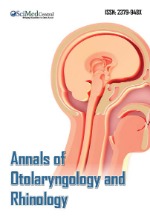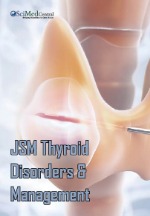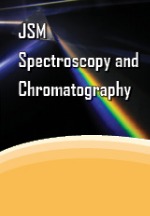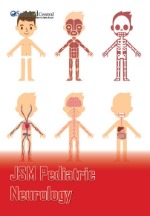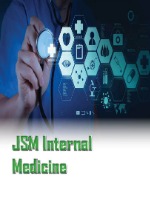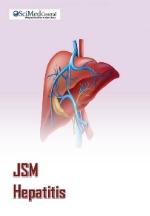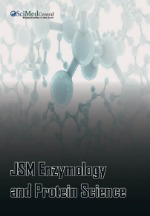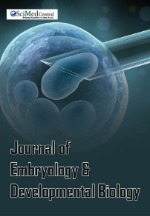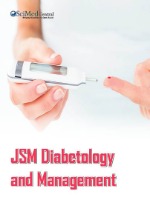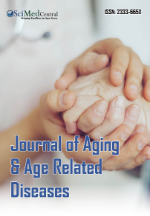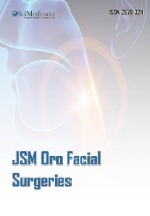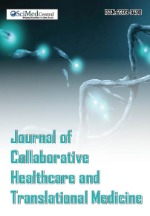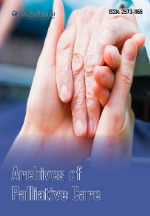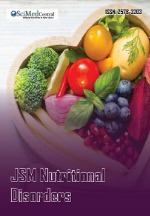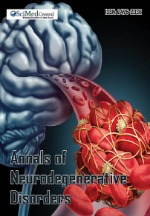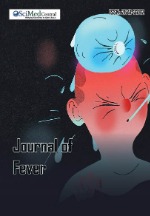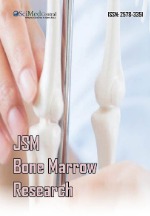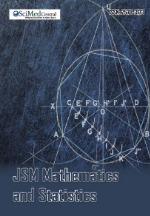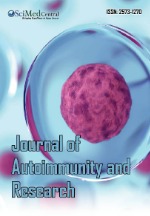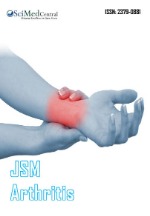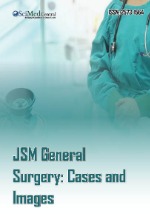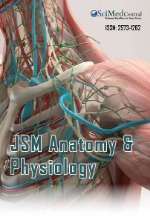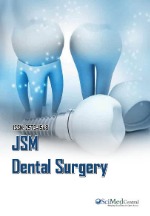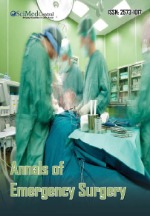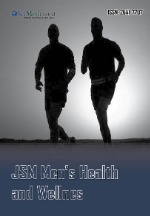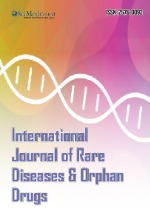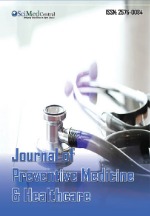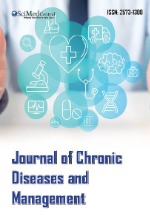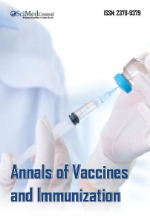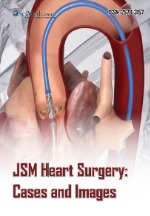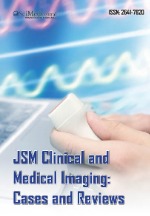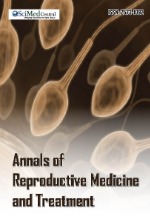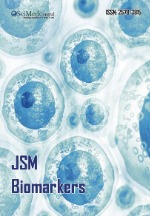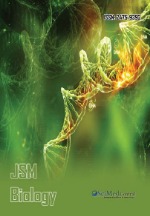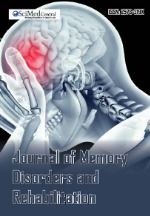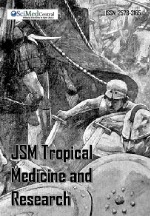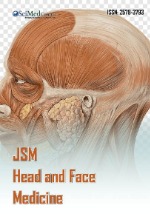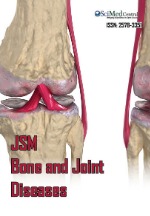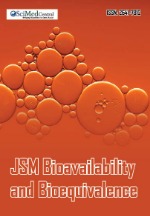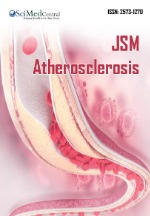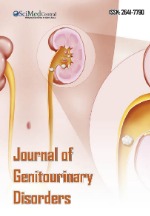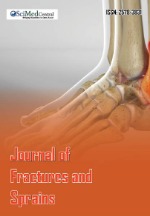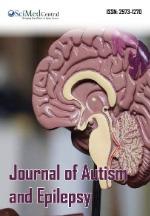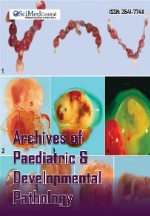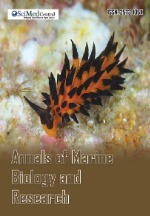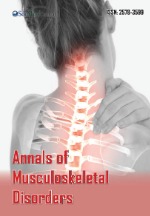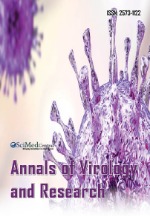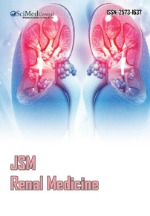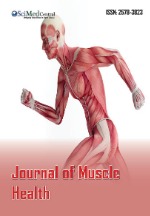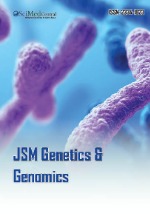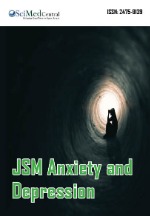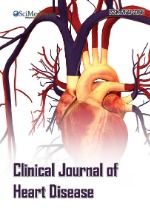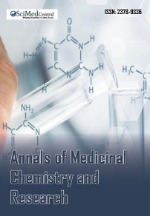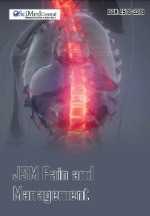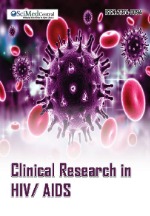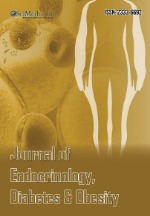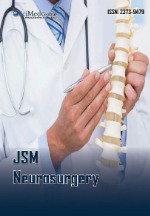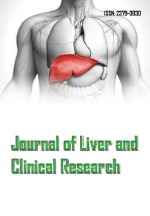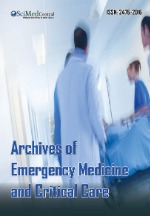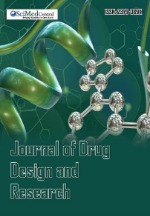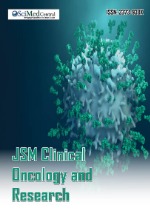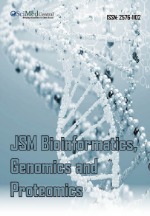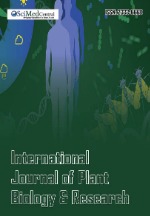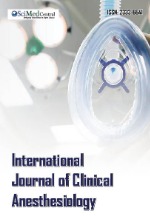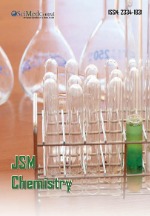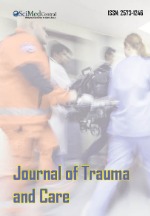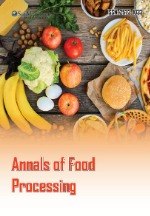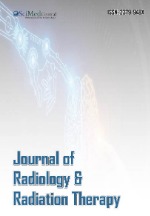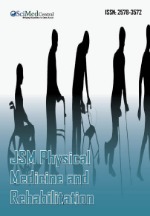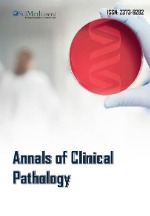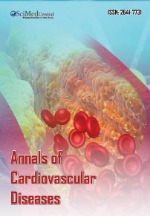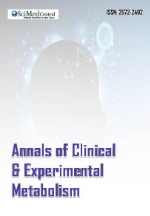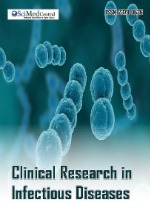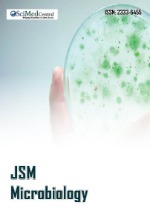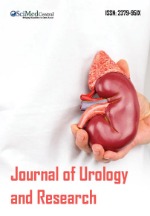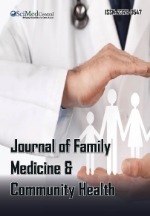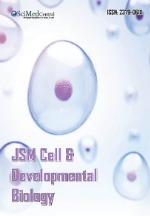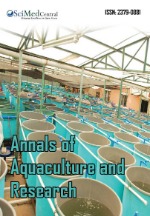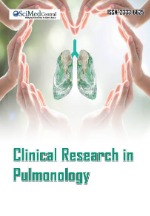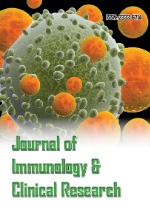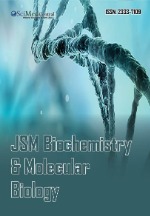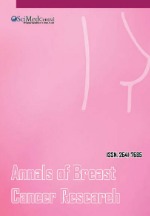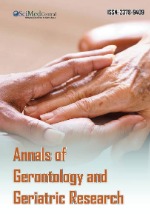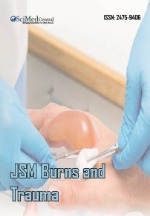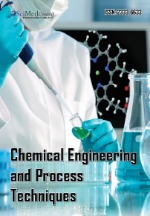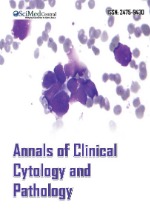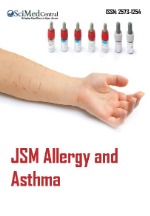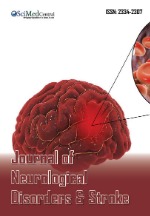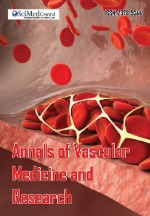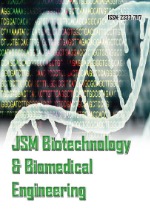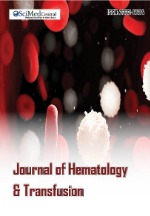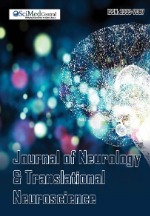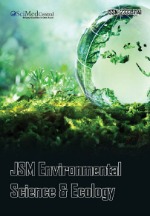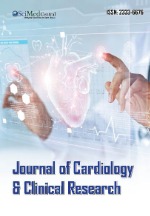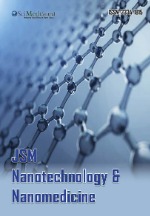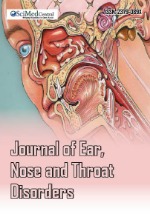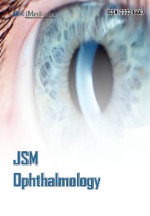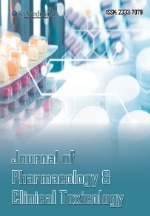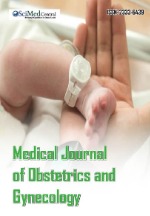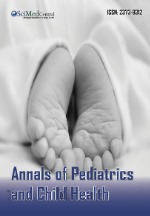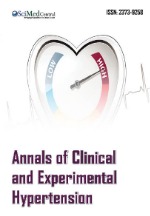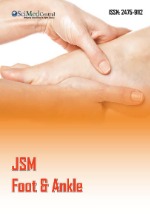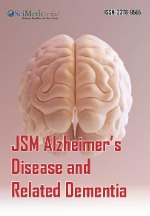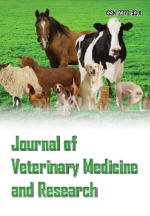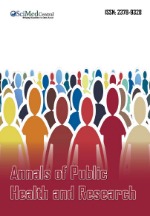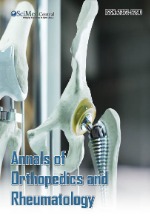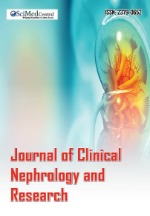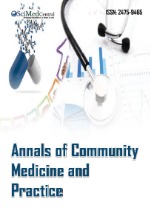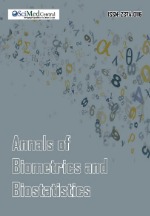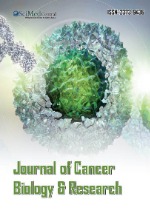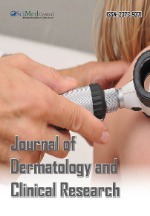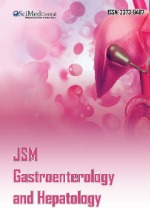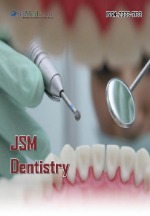Increase of Selenium, Vitamin E and HDL in Elderly Blood Using Biofortified Beef Meat
- 1. Department of Animal Science, University of Sao Paulo, Brazil
- 2. Department of Biotechnology, University of Ribeirão Preto (UNAERP), Brazil
Abstract
This study aimed to investigate the effects of meat biofortified with antioxidants and canola oil on the elderly’s health through blood parameters. Eighty institutionalized older per-sons were divided into four groups who received the following treatments: C) control meat with 46 µg/kg of meat selenium, 3.80 g/kg of meat vitamin E and 0.78 g/100 g of meat conjugated linoleic acid (CLA); CA) antioxidant meat with 422 µg/kg of meat selenium, 7.65 g/kg of meat vitamin E and 0.85 g/100 g of meat CLA; CO) oil meat with 57 µg/kg of meat selenium, 3.98 g/kg of meat vitamin E and 1.27 g/100 g of meat CLA; COA) oil and antioxidant meat with 367 µg/kg of meat selenium, 7.78 g/kg of meat vitamin E and 1.08 g/100 g of meat CLA. Elderly blood samples were collected at 0, 45, and 90 days after the start of meat intake. Elderly who consumed ANT (CA and COA) meat had higher concentrations of selenium (P = 0.039), vitamin E (P = 0.044) and HDL (high-density lipoprotein, P = 0.048) in their blood. Biofortified meat efficiently increases selenium and vitamin E for the elderly, as well as, helped maintained healthy HDL levels which can help reduce the risk of heart disease and promote longevity.
Keywords
• Canola oil
• Cholesterol
• Selenium
• Vitamin E
CITATION
da Silva JS, Correa LB, Zanetti MA, Cônsolo NRB, Pfrimer K, et al. (2024) Increase of Selenium, Vitamin E and HDL in Elderly Blood Using Biofortified Beef Meat. J Hum Nutr Food Sci 12(1): 1184.
INTRODUCTION
In the past few years, several studies have shown that elderly people can suffer from malnutrition, due to their inability to utilize most of the nutrients from their diet. This impaired nutritional status in the elderly is frequently associated with falls and bone fractures, higher oxidative stress, and weaker antioxidant defense systems [1,2]. Additionally, improving eating behavior can minimize the risk of the prevalence of many degenerative and chronic diseases [3] such as diabetes [4], atherosclerosis [5], hypertension [2] Alzheimer’s disease, and dementia [6].
Beef represents an important constituent of the human diet and is one of the major sources of protein in many countries. Beyond amino acids, beef also provides an abundance of fatty acids, vitamins, and minerals with obvious nutritional benefits to human health. For this reason, the beef industry is currently undergoing changes towards fortifying produced beef, which can be achieved by supplementing the diets of animals with the so- called “good fat” (n-3, n-6 and n-9) and antioxidants to enhance its concentration on meat, turning it nutritionally healthier for the human consumption [7-9].
Canola is an important source of long-chain polyunsaturated fatty acids (PUFA), and feeding ruminants with this oilseed has been related to changes in meat fatty acids profile toward a high level of n-3 polyunsaturated fatty acid [9]. In sequence, this compound has been associated with a decrease in human’s heart disease, inflammation processes, improvement in brain development, and the immune system [10,11]. Selenium is an essential trace mineral for both humans and animals. It is an important component required for the synthesis of dozens of selenoproteins, which have various biological functions involved in redox homeostasis, immunity, reproduction, thyroid hormone metabolism, and cognitive process [12].
In humans, severe selenium deficiency can be associated with low immunity, increased risks of cancer, bone diseases, several chronic diseases, and loss of cognitive functions [13]. Similarly, vitamin E also induces the synthesis of some important compounds involved in the antioxidant defense process of the body. The nutritional benefits of vitamin E are often related to anti-cancer activity [14], inhibit cardiovascular and bone diseases [15], and inhibit neurodegenerative disorders [16].
Therefore, it is increasingly known that the so-called good fat, Se, and vitamin E have many potential health benefits beyond meeting basic nutritional requirements. As a con-sequence, the enrichment of meat with PUFAs fat and antioxidants can be a good way to improve the nutritional quality of the final product (meat), which brings benefits to meat consumers.
Besides that, many older people are experiencing malnutrition [17] and the nutrient requirement may be even higher in the frail elderly who are at risk of malnutrition because of acute or chronic illness [18] which could influence their quality of life. Therefore, this study was conducted to explore the potential of biofortified meat with PUFAs, Se, and vitamin E on selected biochemical parameters of elderly blood.
MATERIALS AND METHODS
This study is part of a larger experiment that has been already published by Correa et al., [9,19]. The first stage of this experiment was to produce meat biofortified with antioxidants and oil, and then the second stage was to fed elderly people this meat. Both studies were approved by the Animals Ethics Committee (CEUA nº 14.1.1455.74.0.) and the Hu-man Research Ethics Committee (nº 1683/2011 and clinic trials, 1038/2006).
Producing Biofortified Meat
Briefly, an experiment with forty-eight Nellore bulls was performed at the Animal Science and Food Engineering College of Pirassununga SP, Brazil. The animals were randomly distributed in 2 x 2 factorial arrangement (12/treatment) with two levels of oil in the diet (no inclusion and 3% canola oil) and two levels of antioxidants in the diet (no inclusion and 2.5 mg of Se/kg of dry matter (DM) + 500 UI of vitamin E/kg of DM); CON: basal diet, CA: basal diet + 2.5 mg Se/kg and 500 UI vitamin E/kg, CO: basal diet + 3% canola oil, CAO: basal diet + 3% canola oil + 2.5 mg Se/kg and 500 UI vitamin E/kg. Animals were fed for 12 weeks and at 24 h after slaughter, steaks from the Longissimus thoracis muscle at the 12th rib level were packed and conditioned at 2.0 ± 1.0 °C for supply to humans later. More details about the meat quality and animal parameters can be found at Correa et al., [9,19].
Subjects
All participants and their family members were contacted in presentations made in the São Vicente de Paula, in Leme, SP, Brazil, when the purposes and methods of the study were presented and residents were invited to participate in this study.
A total of 80 participants, aged older than 60 years, were recruited. The inclusion criteria were individuals aged 60 years or over, with clinical and biochemical exams assessed as healthy and had no restrictions on eating meat. All volunteers who participated in the experiment were aware of the study through a lecture that was previously held and signed the consent form approved by the Ethics Committee and they weren’t allowed to eat other foods than those served.
At the institute, there was a nutritionist responsible for the formulation of the elderly diet and supervising the preparation of all of the elderly’s meals. Elderly were randomly assigned to four treatments according to the meat enriched through the animals’ diets were as follows: C = control meat, A = meat biofortified with antioxidants (selenium and vitamin E), O = meat biofortified with canola oil, AO = meat biofortified with antioxidants (selenium and vitamin E) plus canola oil. Nutritional composition of raw meat biofortified produced by Nellore bulls fed diets with antioxidants (selenium and vitamin E) and canola oil is shown in Table 1.
Table 1: Nutritional composition
|
|
Control meat1 |
Biofortificated meat2 |
||
|
Item |
C |
A |
O |
AO |
|
Selenium, mg/kg |
0.046 ± 0.004 |
0.422 ± 0.015 |
0.057 ± 0.002 |
0.367 ± 0.031 |
|
Vitamin E, mg/kg |
3.80 ± 0.14 |
7.65 ± 0.27 |
3.98 ± 0.16 |
7.78 ± 0.36 |
|
Fatty acids, immol |
|
|
|
|
|
C18:2c9 t11 (CLA) |
0.78 ± 0.05 |
0.85 ± 0.05 |
1.27 ± 0.05 |
1.08 ± 0.05 |
|
18:0 (Stearic) |
16.28 ± 0.29 |
14.92 ± 0.29 |
15.09 ± 0.29 |
15.61 ± 0.29 |
|
C18:1 c9 (Oleic) |
36.41 ± 0.35 |
37.69 ± 0.35 |
37.54 ± 0.35 |
37.82 ± 0.35 |
|
Saturated |
47.04 ± 0.49 |
45.55 ± 0.49 |
42.87 ± 0.49 |
43.58 ± 0.49 |
|
Mono |
50.24 ± 0.48 |
51.46 ± 0.48 |
53.99 ± 0.48 |
53.53 ± 0.48 |
|
Poly |
2.72 ± 0.12 |
2.99 ± 0.12 |
3.14 ± 0.12 |
2.89 ± 0.12 |
|
H/h |
0.55 ± 0.01 |
0.53 ± 0.01 |
0.46 ± 0.01 |
0.47± 0.01 |
|
n-6/n-3 |
12.51 ± 0.52 |
9.22 ± 0.52 |
8.27 ± 0.52 |
8.09 ± 0.52 |
CLA: conjugated linoleic acid; Mono: monounsaturated fatty acids; Poly: polyunsaturated fatty acid; H/h: hypercholesterolemic/hypocholesterolemic; n-6/n-3;
1C: control meat; 2A: meat biofortified with antioxidants [selenium and vitamin E]; O: meat biofortified with canola oil; AO: meat biofortified with antioxidants [selenium and vitamin E] plus canola oil.
The elderly received bracelets of different colors according to the treatment they were in. All meals offered to the elderly had the same procedure (three different ways: ground, steak, and pot meat), being prepared in specific pans and planned to present similar nutrient contents. Two daily meals of 150 g each meat was prepared for each individual in their respective treatment and offered three times a week for fourteen weeks. The biofortified meat was given to the older subjects two times a day at 11:00 h, for lunch (150 g of meat) and at 16:00 h, for dinner (150 g of meat) to compare the treatments and to verify how meat biofortified can help to reach the daily intake recommended values of these nutrients.
Data collection and Chemical analysis
Blood samples were collected at baseline (day 0, before receiving the treatments), 45 and 90 days, in the morning, after a 12-h fast. For the serum total cholesterol, high density lipoprotein (HDL), low density lipoprotein (LDL), triglycerides and glucose analyses, Laborlab commercial kits (Laborlab®, Guarulhos, São Paulo, Brazil) were used with a Jaffe® automatic analyzer.
Selenium in serum was analyzed by the fluorimetric method [20] improved by Wetter and Ullrey [21]. The content of vitamin E was determined by reversed-phase high-performance liquid chromatography using a fluorescence detector to the methods of Liu et al. [22].
Statistical Analysis
All statistical analyses were conducted using SAS version 9.4 for Windows (SAS In-stitute Inc., Cary, NC, USA). Data were analyzed as a 2x2 factorial scheme in a completely randomized design using the MIXED procedure. The model included the fixed effects of antioxidants (ANT), oil (OIL) and their interaction (OIL*ANT). Also, time of blood collec-tion was taken into account in the model and it´s interaction with diet (Diet*Time). To ex- press the main effects results of oil (OIL) and antioxidants (ANT) was used: NO (no oil, composed of C + A), OIL (oil, composed of O + AO), NA (no antioxidants, composed of C + O), and ANT (antioxidants, composed of A + AO).
Firstly, the normality of residuals and the homogeneity of variances were verified using the UNIVARIATE procedure. Each person was considered as the experimental units following the model: Yijk = µ + ANTi + OILj + (OIL x ANT)ij + eijk Where, Yijk = dependent variable; µ = the general population mean; i = effect of antioxidant in the diet (ANT); j = effect of oil in the diet; and eijk = the unexplained residual element assumed to be independent and normally distributed. The means were obtained through LSMEANS, and the significance level was 5%.
RESULTS
Blood Serum Selenium and Vitamin E
There was no oil*antioxidants (O*A) interaction (P>0.05) for Se and vitamin E con-centrations in the elderly’s blood [Table 2,3 ]. There was a time effect, the concentrations of selenium (P<0.001) increased after 90 days of biofortification meat consumption, while vitamin E concentrations (P<0.001) decreased.
Table 2. Selenium and vitamin E concentrations in the Elderly’s blood, basal and 90 days after starting diet biofortification.
|
|
Treatments |
Time |
P-value |
|||||||
|
Item |
C |
CA |
CO |
CAO |
basal |
90 days |
OIL |
ANT |
O*A |
Time |
|
Selenium, µg/L |
52.69±4.63 |
60.65±4.36 |
54.61±4.36 |
61.05±3.70 |
38.02±1.22 |
57.25±2.14 |
0.93 |
0.04 |
0.42 |
*** |
|
Vitamin E, mg/dL |
7.53±0.71 |
10.37 ±0.76 |
8.05±0.71 |
10.19±0.69 |
10.44±0.42 |
9.04±0.36 |
0.09 |
0.04 |
0.54 |
** |
1OIL: oil effect; ANT: antioxidants effect; O*A: interaction effect antioxidant and oil; T: time effect
***<0.0001; **<0.001; *<0.01 Means within a row with different superscripts differ at 5% probability.
Table 3: Total cholesterol and fractions, triglycerides, and glucose concentrations in the Elderly’s blood, basal and 90 days after starting diet biofortification.
|
|
Treatments |
|
Time |
|
P-value |
||||||
|
Item |
C |
CA |
CO |
CAO |
basal |
90 days |
O |
A |
O*A |
Time |
|
|
Cholesterol, mg/dL |
175.95±7.18 |
167.41±7.58 |
182.37±7.31 |
172.27±6.90 |
189.43±4.39 |
174.50±3.62 |
0.76 |
0.49 |
0.92 |
** |
|
|
HDL, mg/dL |
35.61±1.81 |
44.40±1.95 |
42.79±1.82 |
42.33±1.78 |
44.79±0.83 |
41.28±0.92 |
0.38 |
0.05 |
0.18 |
** |
|
|
LDL+VLDL, mg/dL |
136.75±5.46 |
137.41±5.27 |
140.78±5.38 |
133.37±5.34 |
144.64±4.72 |
133.30±3.53 |
0.93 |
0.33 |
0.83 |
* |
|
|
Triglycerides, mg/dL |
130.10±8.94 |
139.13±8.52 |
135.82±8.81 |
133.41±8.64 |
126.16±6.05 |
136.90±6.59 |
0.47 |
0.85 |
0.44 |
* |
|
|
Glucose, mg/dL |
89.04±4.02 |
89.68±3.92 |
93.21±3.96 |
85.51±3.98 |
89.47±2.85 |
85.18±3.31 |
0.91 |
0.17 |
0.67 |
0.02 |
|
1O: oil effect; A: antioxidants effect; O*A: interaction effect antioxidant and oil; T: time effect ***<0.0001; **<0.001; *<0.01 Means within a row with different superscripts differ at 5% probability.
There was a main effect of ANT (antioxidants effect), the participants who consumed the biofortified meat with antioxidants (CA and CAO) had 17% more selenium (P = 0.039, [Figure 1] and 10% more vitamin E (P=0.0425) in the blood than those who consumed NA (no antioxidants, groups C and CO).
Figure 1: Serum selenium and vitamin E concentrations in Elderly after 90 days of supplementation with biofortified meat. Values are means ± SEM; n = 40. NA (no antioxidants, composed of C + CO), and ANT (antioxidants, composed of CA + CAO).
Means within a row with different superscripts differ at 5% probability.
Blood Serum Biochemical Analysis
There was a time effect, concentrations of total cholesterol (P<0.001), HDL (P<0.001), glucose (P=0.0167), LDL+VLDL (P=0.0023), and glucose (P=0.0167) decreased after 90 days of consumption. However, concentrations of triglycerides (P=0.0039) increased.
There was a main effect of antioxidants (ANT), the elderly who consumed the biofor-tified meat with antioxidants (CA and CAO) had 6.8% more HDL (P = 0.048, [Figure 2]) than those who consumed NA (no antioxidants, groups C and CO).
Figure 2: HDL concentrations in Elderly after 90 days of supplementation with bio-fortified meat. Values are means ± SEM; n = 40. NA (no antioxidants, composed of C + CO), and ANT (antioxidants, composed of CA + CAO).
DISCUSSION
Aging is an inevitable process characterized by changes in health and physiology which can develop a high risk of nutritional deficiencies that are either due to low dietary intake impairment in the mechanism of absorption or failure to convert to active forms. Situation that affects cognitive functioning and can lead to the development of degenerative diseases [23]. This impaired nutritional status in the elderly is frequently associated with falls and bone fractures, higher oxidative stress, and weaker antioxidant defense systems [1,2]. Thus, improving eating behavior is fundamental to minimizing the risk of prevalence of many degenerative and chronic diseases [3] such as diabetes [4], atherosclerosis [5], hypertension [2] Alzheimer’s disease, and dementia [6].
How elderly people fail to meet their requirement for nutrients through dietary sources due to their inadequate food intake the use of dietary supplements has been in great demand [23]. Beef is an important natural source of nutrients and the fortification of livestock feeds is a strategy shown to successfully boost the nutrient level even further [24,25].
Several studies have investigated the association between animal nutrition and the quality of their products like meat [9], milk [26,27], and eggs [28] to meet the demand for consumers’ concern with healthy life [29]. In this context, it is already known the importance and power of some nutrients or compounds to improve human health and de-crease cases of some diseases, especially those correlated with chronic inflammation, de- generative processes, and consumers’ welfare [22].
Our results demonstrate that feeding animals with canola oil and antioxidants (selenium and vitamin E) is an effective way of fortifying meat with PUFAs, especially n-3 and CLA [9,19], essential elements for human consumption, producing healthier meat, which might impact positively the meat consumers’ health [9,19].
The antioxidants, selenium and vitamin E, are interrelated being that cells require both for complete protection. Selenium is an important micronutrient that as an antioxidant, prevents the formation of free radicals protecting the body from oxidative aggression through a series of selenoproteins, mainly glutathione peroxidase (GPx) and selenoprotein P [30]. Globally, Se deficiency is more prevalent than Se poisoning [31] and Se deficiency can result in a decrease in human immunity and can threaten human health [32].
Animal products are an important source of proteins, vitamins, minerals, and fatty acids for human health, and daily consumed by humans the improvement of those product’s’ nutritional quality can be made by changes in animal diets [9,34,35]. The present study suggests that biofortified red meat can be a potential way of improving nutrient consumption for the elderly. In this research, elderly who ingested biofortified meat, produced by beef cattle fed with vitamin E and selenium, showed greater blood levels of those antioxidants and HDL cholesterol fraction as compared to the elderly who ingested meat from cattle without antioxidants supplementation.
According to WHO and FAO (2001), the recommendation (IR) Se and vitamin E in-take is 55 μg of Se/day and 15 μg vitamin E/day for adults. If we make an estimate, 150 g of biofortified meat (with 0.42 mg Se/kg meat and 7.65 mg vitamin E/kg) would provide, approximately, 63 μg of Se and 1.15 mg of vitamin E. The increase in selenium and vitamin E in the blood of the elderly proves that both were present in biofortified meat and were absorbed to the point of altering their serum levels in humans. In other words, providing biofortified meat to the elderly is an efficient way to raise or maintain the levels of these two antioxidants in the human body which can prevent many diseases aging-related.
Indeed, aging is a complex phenomenon that plays a significant role in the nutritional status, health, and brain capacity integrity of elderly people. Aging is closely related to oxidative stress and it can be accelerated by the increasing levels of reactive oxygen species (ROS) when the antioxidative defense is not well stimulated, the oxidative stress can lead to lipids and proteins (enzymes) oxidation, cellular and DNA damages, resulting in cases of chronic inflammation, which has been correlated with several diseases in elderly people [34].
Unfortunately, we did not evaluate reactive oxygen species (ROS) parameters, so more investigation with a greater number of experimental units and a longer period of the experiment can be interesting to explain better the effect of meat biofortified with antioxidants.
Another important point is that cardiovascular diseases remain, globally, the leading cause of mortality, with hypercholesterolemia as the major risk factor. Thus, many studies have been searching for nutraceuticals and phytochemicals drugs with the ability to cholesterol lowering and that have minimal side effects. Among them, selenium is on the list due to its heart function and the relationship between blood selenium level and lipid pro-files documented in recent articles [36,37].
In the present study, we did not find a significant effect of treatments on total cholesterol, but it was observed that HDL cholesterol levels are positively associated with the antioxidants group, as previously described by others works [38-40]. In longitudinal analyses with elderly volunteers, the increasing plasma selenium concentrations were associated with decreasing total cholesterol levels, and increasing HDL cholesterol levels [41]. Similarly, in a China cross-sectional study with 1859 participants (aged 65 or older) observed that higher selenium levels were significantly associated with a lower risk of Low- HDL [39]. In the USA, selenium in adults also was associated with increasing HDL [38].
Some limitations of this study should be considered: 1. All volunteers were recruited from a unique institution which assures that all subjects received the same meals, this is a good fact, but restricts sample size; 2. It is difficult to reference values for the outcomes studied, so the control group was used as a baseline value for comparison; 3. The experimental period [90 days] has been not long enough to detect changes in the lipid profile in the longer term. Nevertheless, the biofortified meat impacted the concentration of these nutrients in the elderly studied.
CONCLUSIONS
Feeding the elderly meat biofortified with selenium and vitamin E increases the con-centration of these metabolites in their blood, so meat biofortified can be an important strategy to improve nutrient ingestion for the elderly. As well as, helping maintain healthy HDL levels which can help reduce the risk of heart disease and promote longevity. More investigations with higher experimental units and periods can be interesting.
AUTHOR CONTRIBUTIONS
Conceptualization, M.A.Z, L.B.C. and A.S.N.; methodology, M.A.Z, A.S.N., J.S.S and L.B.C.; formal analysis, J.S.S; investigation, A.S.N., L.B.C. and J.S.S; resources, A.S.N and M.A.Z.; writing— original draft preparation, J.S.S; writing—review and editing, N.R.B.C. and K.P.; supervision, M.A.Z and A.S.N.; project administration, M.A.Z and L.B.C.; funding acquisition, M.A.Z and A.S.N. All authors have read and agreed to the published version of the manuscript.
FUNDING
This research was funded by São Paulo Research Foundation (FAPESP), grant number 2011/20987–9.
Institutional Review Board Statement: In The study was approved by the Institutional Review Board of the College of Animal Science and Food Engineering (FZEA/USP), protocol code nº 14.1.1455.74.0 and the Human Research Ethics Committee of Anhanguera Colleges (protocol code nº 1683/2011).
Informed Consent Statement: A Informed consent was obtained from all subjects involved in the study.
Data Availability Statement: We Data will be made available by request.
Acknowledgments: The authors would like to thank all of the study subjects for their participation. Also thank São Paulo Research Foundation (FAPESP), grant number 2011/20987–9 for the financial support.
Disclaimer/Publisher’s Note: The statements, opinions and data contained in all publications are solely those of the individual author(s) and contributor(s) and not of MDPI and/or the editor(s). MDPI and/or the editor(s) disclaim responsibility for any in-jury to people or property resulting from any ideas, methods, instructions or products referred to in the content.
REFERENCES
- Gano LB, Donato AJ, Pierce GL, Pasha HM, Magerko KA, Roeca C, et al. Increased proinflammatory and oxidant gene expression in circulating mononuclear cells in older adults: Amelioration by habitual exercise. Physiol Genomics. 2011; 43: 895-902.
- Rybka J, Kupczyk D, Kedziora-Kornatowska K, Pawluk H, Czuczejko J, Szewczyk-Golec K, et al. Age-related changes in an antioxidant defense system in elderly patients with essential hypertension compared with healthy controls. Redox Rep. 2011; 16: 71-77.
- Hou Y, Dan X, Babbar M, Wei Y, Hasselbalch SG, Croteau DL, et al. Ageing as a risk factor for neurodegenerative disease. Nat Rev Neurol. 2019; 15: 565-581.
- Deng L, Du C, Song P, Chen T, Rui S, Armstrong DG, et al. Molecular Mechanisms of Dietary Bioactive Compounds in Redox Balance and Metabolic Disorders. Oxid Med Cell Longev. 2021; 2021: 1-11.
- Caruso F, Rossi M, Kaur S, Garcia-Villar E, Molasky N, Belli S, et al. Antioxidant properties of embelin in cell culture. Electrochemistry and theoretical mechanism of scavenging. potential scavenging of superoxide radical through the membrane cell. Antioxidants. 2020; 9: 382.
- Jennings A, Cunnane SC, Minihane AM. Can nutrition support healthy cognitive ageing and reduce dementia risk? BMJ. 2020; 369: m2269.
- Silva JS, Rodriguez FD, Trettel M, Abal RT, Lima CG, Yoshikawa CYCC, et al. Performance, carcass characteristics and meat quality of Nellore cattle supplemented with supranutritional doses of sodium selenite or selenium-enriched yeast. Animal. 2019; 14: 215-222.
- Cofrades S, Benedí J, Garcimartin A, Sánchez-Muniz FJ, Jimenez- Colmenero F. A comprehensive approach to formulation of seaweed- enriched meat products: From technological development to assessment of healthy properties. Food Res Int. 2017; 99: 1084-1094.
- Correa LB, Saran Netto A, Silva JS da, Cônsolo NRB, Pugine SMP, Melo MP de, et al. Changes on meat fatty acid profile, cholesterol and hepatic metabolism associated with antioxidants and canola oil supplementation for Nellore cattle. Livest Sci. 2022; 257: 104850.
- Casanova MA, Medeiros F, Trindade M, Cohen C, Oigman W, Neves MF. Omega-3 fatty acids supplementation improves endothelial function and arterial stiffness in hypertensive patients with hypertriglyceridemia and high cardiovascular risk. J Am Soc Hypertens. 2017; 11: 10-19.
- Medeiros DM, Hampton M, Kurtzer K, Parelman M, Al-Tamimi E, Drouillard JS. Feeding enriched omega-3 fatty acid beef to rats increases omega-3 fatty acid content of heart and liver membranes and decreases serum vascular cell adhesion molecule-1 and cholesterol levels. Nutr Res. 2007; 27: 295-299.
- Stallen Lopes Nogueira B, Ducatti M, Horiquini-Barbosa E. Selenium consumption and its relationship with the maintenance of cognitive function: a systematic review on humans and animals. Rev Neurosciences. 2020; 28: 10581.
- Zhang K, Guo X, Zhao Q, Han Y, Zhan T, Li Y, et al. Development and application of a HPLC-ICP-MS method to determine selenium speciation in muscle of pigs treated with different selenium supplements. Food Chem. 2020; 302: 125371.
- Yoshida Y, Niki E, Noguchi N. Comparative study on the action of tocopherols and tocotrienols as antioxidant: chemical and physical effects. Chem Phys Lipids. 2003; 123: 63-75.
- Ramanathan N, Tan E, Loh LJ, Soh BS, Yap WN. Tocotrienol is a cardioprotective agent against ageing-associated cardiovascular disease and its associated morbidities. Nutr Metab (Lond). 2018; 15: 6.
- La Torre ME, Villano I, Monda M, Messina A, Cibelli G, Valenzano A, et al. Role of Vitamin E and the Orexin System in Neuroprotection. Brain Sci. 2021, 11, 1098. Brain Sci. 2022; 12: 1709.
- Pfrimer K, Ferriolli E, Takeuchi PL, Salles MSVM, Saran-Netto A, Zanetti MA, et al. Effects of the Consumption of Milk Biofortified with Selenium, Vitamin E, and Different Fatty Acid Profile on Immune Response in the Elderly. Mol Nutr Food Res. 2018; 62: 1-7.
- Deutz NEP, Bauer JM, Barazzoni R, Biolo G, Boirie Y, Bosy-Westphal A, et al. Protein intake and exercise for optimal muscle function with aging: Recommendations from the ESPEN Expert Group. Clin Nutr. 2014; 33: 929-936.
- Corrêa LB, Saran Netto A, Cônsolo NRB, Garrine CMLP, Yoshikawa CYC, da Cunha JA, et al. Effects of canola oil and antioxidants on performance, serum parameters, carcass traits, and rumen fermentation patterns of Nellore cattle. Animal. 2021; 15: 100217.
- Olson OE, Palmer LS, Cary EL. Modification of the official Fluorimetric method for selenium in plants. J. AOAC 1975; 58: 117-121.
- Whetter PA, Ullrey DE. Improved Fluorometric Method for Determining Selenium. J. AOAC Int. 1978; 61: 927-930.
- Liu Q, Scheller KK, Arp SC, Schaefer DM, Williams SN. Titration of Fresh Meat Color Stability and Malondialdehyde Development with Holstein Steers Fed Vitamin E-Supplemented Diets. J Anim Sci. 1996; 74: 117-126.
- Kaur D, Rasane P, Singh J, Kaur S, Kumar V, Mahato DK, et al. Nutritional Interventions for Elderly and Considerations for the Development of Geriatric Foods. Curr Aging Sci. 2019; 12: 15-27.
- Leroy F, Abraini F, Beal T, Dominguez-Salas P, Gregorini P, Manzano P, et al. Animal board invited review: Animal source foods in healthy, sustainable, and ethical diets – An argument against drastic limitation of livestock in the food system. Animal. 2022; 16: 100457.
- Pogorzelska-nowicka E, Atanasov AG, Horbanczuk J, Wierzbicka A. Bioactive Compounds in Functional Meat Products. Molecules. 2018; 23: 307-326.
- Salles MSV, Netto AS, Zanetti MA, Samóra TSA, Junior LCR, Lima CG, et al. Milk biofortification through dietary supplementation of combined selenium, vitamin E and sunflower oil. Livest Sci. 2022; 258: 104856.
- Saran Netto A, Silva TH, Martins MM, Vidal AMC, Salles MS V, Roma Júnior LC, et al. Inclusion of Sunflower Oil, Organic Selenium, and Vitamin E on Milk Production and Composition, and Blood Parameters of Lactating Cows. Animals. 2022; 12: 1968.
- Dansou DM, Wang H, Nugroho RD, He W, Zhao Q, Tang C, et al. Effects of duration and supplementation dose with astaxanthin on egg fortification. Poult Sci. 2021; 100: 101304.
- Pedrouso ML, Lorenzo JM, Zapata C, Franco D. Proteins and amino acids. In Innovative Thermal and Non-Thermal Processing, Bioaccessibility and Bioavailability of Nutrients and Bioactive Compounds; Barba FJ, Saraiva JMA, Cravotto G, Lorenzo JM, Eds. Woodhead Publishing Series in Food Science, Technology and Nutrition, 2019; 139-169.
- Solovyev N, Drobyshev E, Bjørklund G, Dubrovskii Y, Lysiuk R, Rayman MP. Selenium, selenoprotein P, and Alzheimer’s disease: is there a link? Free Radic Biol Med. 2018; 127: 124-133.
- Xiao K, Lu L, Tang J, Chen H, Li D, Liu Y. Parent material modulates land use effects on soil selenium bioavailability in a selenium- enriched region of southwest China. Geoderma. 2020; 376: 114554.
- Kieliszek M, B?azejak S. Current knowledge on the importance of selenium in food for living organisms: A review. Molecules. 2016; 21: 609.
- Pfrimer K, Ferriolli E, Takeuchi PL, Salles MS V, Saran Netto A, Zanetti MA, et al. Effects of the Consumption of Milk Biofortified with Selenium, Vitamin E, and Different Fatty Acid Profile on Immune Response in the Elderly. Mol Nutr Food Res. 2018; 62: 1-23.
- Faraji H, Jamshidi S, Askari G. Dietary intake of antioxidants in the elderly people under nursing care: A case-control study. Int J Prev Med. 2019; 10: 191-196.
- Cônsolo NRB, Gardinal R, Gandra JR, de Freitas Junior JE, Rennó FP, De MH, et al. High levels of whole raw soybean in diets for Nellore bulls in feedlot: Effect on growth performance, carcass traits and meat quality. J Anim Physiol Anim Nutr (Berl). 2015; 99: 201-209.
- Al-Mubarak AA, van der Meer P, Bomer N. Selenium, Selenoproteins, and Heart Failure: Current Knowledge and Future Perspective. Curr Heart Fail Rep. 2021; 18: 122-131.
- Huang J, Xie L, Song A, Zhang C. Selenium Status and Its Antioxidant Role in Metabolic Diseases. Oxid Med Cell Longev. 2022; 2022: 7009863.
- Laclaustra M, Stranges S, Navas-Acien A, Ordovas JM, Guallar E. Serum selenium and serum lipids in US adults: National Health and Nutrition Examination Survey (NHANES) 2003-2004. Atherosclerosis 2010;210: 643-648.
- Su L, Gao S, Unverzagt FW, Cheng Y, Hake AM, Xin P, et al. Selenium Level and Dyslipidemia in Rural Elderly Chinese. PLoS One. 2015; 10: e0136706.
- Zhao M, Luo T, Zhao Z, Rong H, Zha G, Lei L. Food Chemistry of Selenium and Controversial Roles of Selenium in Affecting Blood Cholesterol Concentrations. J Agric Food Chem. 2021; 69: 4935-4945.
- Rayman MP. Selenium and human health. Lancet. 2012; 379: 1256-1268.
- Bleys J, Navas-Acien A, Stranges S, Menke A, Miller ER, Guallar E. Serum selenium and serum lipids in US adults. Am J Clin Nutr. 2008; 88: 416-423.
- Chen C, Jin Y, Unverzagt FW, Cheng Y, Hake AM, Liang C, et al. The association between selenium and lipid levels: A longitudinal study in rural elderly Chinese. Arch Gerontol Geriatr. 2015; 60: 147-152.
- Warnakulasuriya LS, Samaranayake DL, Adikaram AVN, Fernando MMA, Rytter E, Ciba I, et al. Metabolic Abnormalities in a Cohort of Overweight and Obese Children in an Urban Setting of Sri Lanka. Int J Endocrinol. 2021; 2021: 9936889.
- Liu Z, Burgess S, Wang Z, Deng W, Chu X, Cai J, et al. Associations of triglyceride levels with longevity and frailty : A Mendelian randomization analysis. Sci Rep. 2017; 7: 41579.
- Lv Y-B, Mao C, Gao X, Yin Z-X, Kraus VB, Yuan J-Q, et al. Triglycerides Paradox Among the Oldest Old: “The Lower the Better?” J Am Geriatr Soc. 2019; 67: 741-748.




